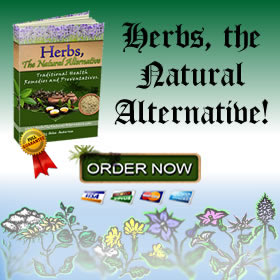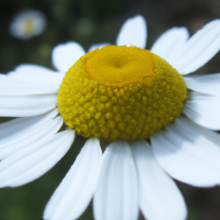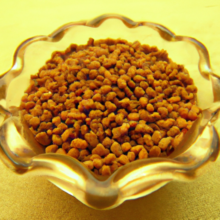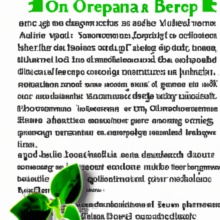Guide to Making Herbal Remedies at Home
Have you ever wondered how you can prepare your own herbal remedies at home? Well, you’re in luck! In this article, we’re going to delve into the world of DIY herbal remedies. Whether you’re looking to relieve a headache, calm an upset stomach, or boost your immune system, we’ll explore step-by-step instructions to help you create your own natural remedies right in the comfort of your own kitchen.
Making your own herbal remedies is not only fulfilling, but it also allows you to take control of your health and well-being. Plus, it can be a great way to save some money! Throughout this article, we’ll guide you through selecting the right herbs, the different methods of preparation, and how to properly store your homemade remedies. So whether you’re a complete beginner or have some experience, you’ll find valuable information and handy tips to expand your knowledge and improve your health. Get ready to roll up your sleeves and embrace the wonderful world of herbal remedies! Stay tuned to learn more in the upcoming paragraphs of this article.

Guide to Making Herbal Remedies at Home
Are you interested in exploring the world of herbal medicine and creating your own remedies at home? Herbal medicine has a long history of use in various cultures around the world, and many people are turning to natural remedies to promote health and well-being. In this guide, we will walk you through the process of understanding herbal medicine, choosing the right herbs, harvesting and preparing herbs, extracting their beneficial compounds, and creating various types of herbal remedies. With this knowledge, you can empower yourself to take control of your health and well-being in a natural and holistic way.
Understanding Herbal Medicine
Herbal medicine, also known as herbalism or botanical medicine, involves using plants and their extracts to promote health and treat various ailments. This practice has been utilized for centuries and has deep roots in many traditional healing systems, such as Chinese medicine, Ayurveda, and Native American medicine. Understanding the history and background of herbal medicine can help you appreciate its efficacy and why it is still used today.
Choosing the Right Herbs
Before you can create your own herbal remedies, it is important to choose the right herbs for your specific needs. Different herbs have different properties and can be used to address various health issues. It is essential to identify the different types of herbs and their specific uses. Some herbs may have multiple uses, while others are known for their specific healing properties. Additionally, considering safety and precautions when using herbs is crucial to ensure optimal health outcomes.
Harvesting and Preparing Herbs
Once you have chosen the herbs you want to work with, the next step is to harvest and prepare them for use in your remedies. Harvesting herbs at the right time is essential to ensure their potency and effectiveness. Different parts of the plant, such as leaves, flowers, or roots, may be used for different remedies. Properly drying and storing herbs for future use is also important to preserve their medicinal properties. The process of preparing herbs for different remedies will depend on the specific type of remedy you are creating.
Methods of Herbal Extraction
To harness the healing properties of herbs, it is necessary to extract their beneficial compounds. There are different methods of herbal extraction, ranging from traditional techniques to modern technologies. Traditional methods include steeping herbs in a liquid, such as water or oil, to create infusions and decoctions. Modern techniques, such as using alcohol or glycerin to make tinctures, provide more concentrated extracts. Choosing the appropriate extraction method for your desired remedy is crucial to ensure optimal results.
Basic Herbal Remedies
Now that you understand the basics of herbal medicine and have learned how to harvest and extract herbs, it’s time to delve into creating basic herbal remedies. There are numerous common herbal remedies for everyday health issues, such as colds, headaches, digestion problems, and sleep disturbances. Understanding the appropriate dosages and administration methods is important for achieving the desired results. It is also essential to recognize and be aware of any potential side effects that may arise from using herbal remedies.
Creating Herbal Infusions
Herbal infusions are a popular method of extracting the medicinal properties of herbs. They can be used in various ways, such as preparing infused oils and vinegars or making herbal decoctions. Infused oils are commonly used in topical applications for skin conditions or as massage oils. Vinegars infused with herbs can be used in salad dressings or taken internally for various health benefits. Herbal decoctions involve simmering herbs in water to extract their properties and are often used for creating medicinal teas.
Making Herbal Tinctures
Herbal tinctures are potent extracts that are made by soaking herbs in alcohol. They are highly concentrated and are typically taken in small doses. Choosing the right alcohol for tinctures is important to ensure effective extraction of the herbs’ beneficial compounds. The step-by-step process of making tinctures involves macerating the herbs, soaking them in alcohol, and allowing them to steep for a certain period. Determining the proper dosages and usage instructions for tinctures is essential for achieving desired outcomes.
Crafting Herbal Salves and Balms
Herbal salves and balms are often used for topical applications to promote healing and alleviate various skin conditions. Selecting appropriate base ingredients, such as beeswax or coconut oil, is crucial for creating the desired consistency and texture. Essential oils can be added to enhance the therapeutic benefits of the salves and balms. There are different types of salves and balms that can be crafted for specific purposes, such as soothing muscle pain or treating dry skin.
Preparing Herbal Teas
One of the most common and accessible ways to use herbs for medicinal purposes is by brewing herbal teas. Herbal teas can be made from various parts of the plant, such as leaves, flowers, or roots, depending on their specific therapeutic properties. Properly preparing herbal teas involves steeping the herbs in hot water for a certain period to extract their beneficial compounds. Herbal teas can be enjoyed both for their taste and their healing properties.
Conclusion
By following this comprehensive guide to making herbal remedies at home, you can become knowledgeable and proficient in creating your own natural remedies. Understanding the history and benefits of herbal medicine, choosing the right herbs, harvesting and preparing them correctly, and utilizing various extraction methods will empower you to take control of your health and well-being. With the ability to make basic remedies, infused oils, tinctures, salves, balms, and teas, you can incorporate herbal medicine into your daily life and experience the healing power of plants.





